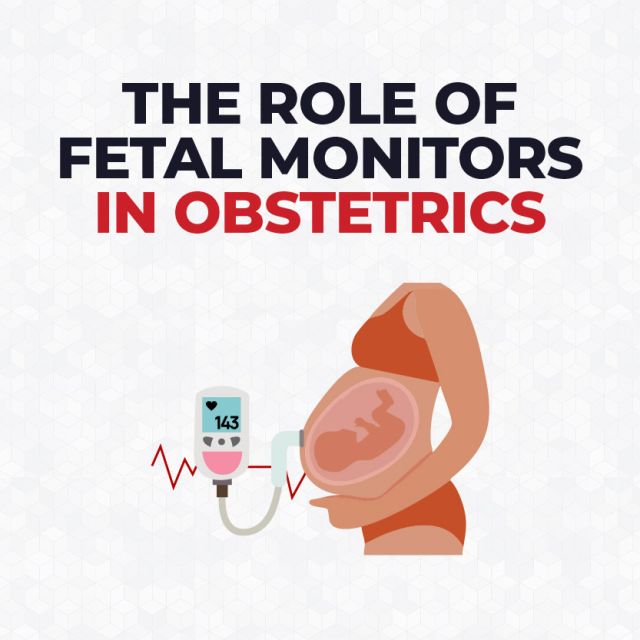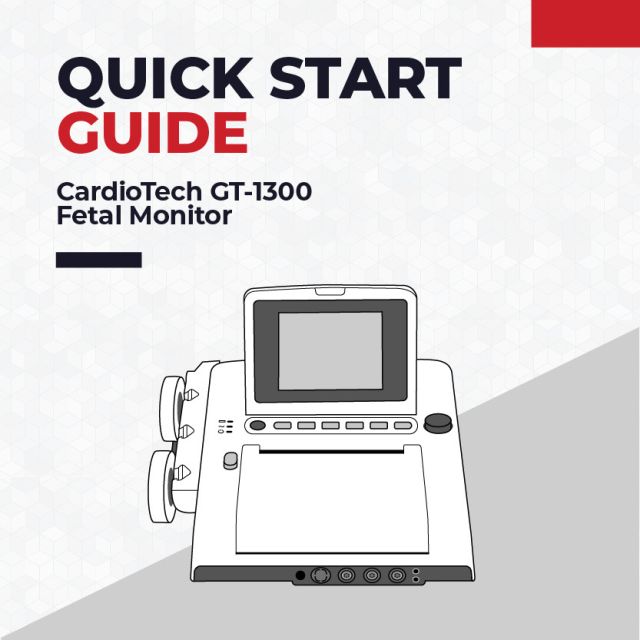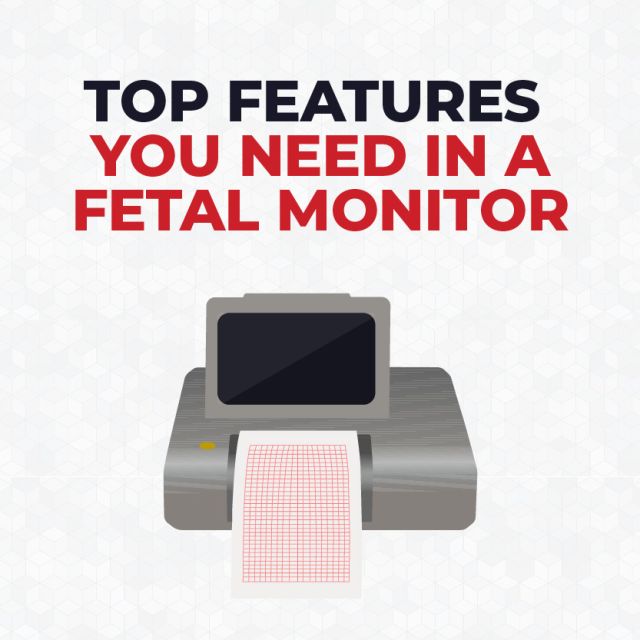Fetal Monitors: Before you Buy

During a woman’s pregnancy or birth, it is imperative that the doctor is aware of the health of the fetus. Doctors can use a fetal monitor for tracking functions, such as fetal heart rate and uterine contractions, during pregnancy and labor.
When purchasing a new fetal monitor machine, you will want to ensure that it has all of the necessary features and parameters for your needs.
- Do you need to monitor more than one fetus?
- Do you want your fetal monitor to function as a patient monitor as well?
- What accessories will you need to purchase for your new machine?
- What are the differences between the brands that sell these machines?
We will address all of these concerns and more to aid you in the purchase of your new fetal monitor.
What Does a fetal monitor do?
Fetal monitors are for monitoring fetal heart rate, uterine contractions, and other functions during pregnancy and labor. Measuring fetal heart rate is done by using a probe that is attached to a belt around the mother’s abdomen. If the mother is pregnant with twins, you’ll need a fetal monitor that contains two FHR probes. A TOCO transducer, attaching to the belt around the mother’s abdomen, is for measuring contractions.
Brand:
When deciding which fetal monitor is best for your needs, it’s important to consider how the brand will affect the price. Fetal monitor machines only differ by approximately +/- 1% accuracy across different brands. So, when you purchase a fetal monitor, you are mainly paying for the brand name.
For example, Welch Allyn and GE are very well-known, trustworthy brands. Therefore, their fetal monitors are more expensive. Brand product quality is also very important to consider while you decide which fetal monitor to invest in. In order to determine the quality, you should consider how long the machine has been on the market. Also, you should ask sales representatives what machines they see a lot of returns for.
Additionally, research how long the machine will last, as purchasing a fetal monitor is a significant investment. Fetal monitors from brands such as Bistos only last 3-4 years. On the other hand, monitors from Edan last 8-10 years. The more expensive Welch Allyn and GE fetal monitors will last approximately 10 years.
Another detail to note is that you will pay more for brands that private label fetal monitors. CooperSurgical, for example, is a brand that puts its name on other manufacturer’s products. This ultimately increases the price compared to if you were to buy the same machine directly from a manufacturer. Some more notable brands that sell patient monitors are Edan, Wallach, and GE.
Style and Parameters:
Accessories/Disposables
The most common disposable accessories that you will need when you purchase a fetal monitor are fetal monitor paper, ultrasound gel, and belts. During research on which monitor to buy, it’s important to choose one that requires inexpensive paper.
Because these machines are continuously reading fetal heart rates and contractions, they’re constantly printing on fetal monitor paper. It’ll cost you a lot of unnecessary money if you purchase a fetal monitor that requires very expensive paper.
You will also need to purchase ultrasound gel to go along with your fetal monitor. This gel is required so that the machine can pick up sound waves.
Belts are another necessary disposable accessory that you will need to purchase for your fetal monitor. The belt is used to keep the FHR and TOCO probes in place on the mother’s stomach.
Software
When you purchase your new fetal monitor, you should ensure that it has software and event markers. The price of your machine can include the software, or you may need to buy it separately. Regardless, the software is necessary because it allows for storing and uploading patient information into the EMR. You need to consider if your machine’s price includes software, or if purchasing additional software will affect the overall price.
You should also ensure that your new fetal monitor has event markers for both the doctor and the mother to mark notable incidents. For example, the doctor can use the event marker to mark when they give the mother drugs and the mother can use the event marker to indicate if she feels something abnormal.
Another aspect to consider when purchasing a new fetal monitor is whether or not you’re wanting high acuity parameters.
One such parameter is Direct ECG, or DECG, and is usually only found in hospital settings. DECG is used when the baby’s heart rate can’t be found, so an electrode is inserted into the mother’s uterus and is fastened to the baby’s scalp. This parameter can be very expensive and is found in machines such as Edan’s F9 Express Fully Loaded.
Features
There are many optional features you may want to consider when deciding which fetal monitor is right for you. Some of these include maternal parameters and twins FHR.
If you decide to choose a machine that has maternal parameters, your machine is a patient monitor and a fetal monitor. If you choose to purchase a machine that includes this parameter, you’ll need to consider that electrodes will be another disposable accessory you will have to purchase. This additional feature will drastically affect the price of the machine. However, your machine will be capable of recording readings for things such as the mother’s ECG, HR/PR, NIBP, SPO2, and TEMP.
Another optional feature is purchasing a machine that is capable of measuring readings for twins. Machines capable of this have two FHR probes and one TOCO. All Edan fetal monitors, for example, are capable of twin readings.
Reimbursement Rates
Knowing reimbursement rates is also important as they could potentially be affecting your overall return on investment. External Fetal Monitoring is when the fetal heartbeat is recorded through the mother’s abdomen using a device. EFM is a routine part of labor management, so the equipment used to do so should be a part of the cost of conducting these services. Therefore, the use of EFM equipment is not separately reimbursable.
On the other hand, Internal Fetal Monitoring is inserting an electrode into the mother’s uterus and placing it directly on the scalp of the baby. In order to receive reimbursement for this, you can use the CPT code 59050 or 59051. However, this is only reimbursable when the IFM is performed by a consultant, this procedure occurred 48 hours before delivery, and the date of delivery is specified in the claim.







